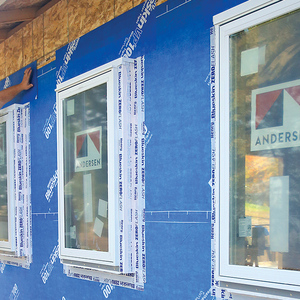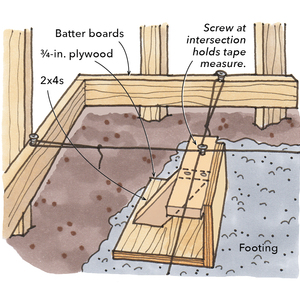Removing old insulation from attic
I have a late 1950’s ranch in the Washington DC area. Its in basically good shape but there are some things that aren’t as modern as I would like especially the attic and the ventilation. There is very little insulation in the attic, and while it has ridge vents it does not have soffit vents, and the bathroom fan vents toward one of the soffit sides. The attic is basically empty but has some insulation and boards laid down for either storage or moving around
I would like to do a number of things with the attic, especially fixing the insulation. The problem is that I want to do it in a logical order without making things difficult for myself.
My initial plan was to have the wiring checked, put in a new bathroom fan and have it ventilate toward the gable end, have the attic air sealed, add soffit vents, and stuff the attic full of insulation. I would also like to add a fan to the second bathroom and ventilate the kitchen hood out the roof.
However when I talked to an electrician he gave me an estimate, but said that I need to remove all the old insulation and the boards in the attic first so that he could check whether the wiring was properly spliced and covered. Do I need to remove the old insulation so the electrician can see the wires? There are a lot of old wires, some of it neatly arranged and some of the newer stuff not so neatly. The electrician said that nothing looked dangerous but some of it looked very sloppy, as if done by a person who knew the basics but wasn’t neat.
So do I need to remove the insulation before doing anything else? Is this something I can do myself, or would it be better to hire someone else? Could I put in a kitchen hood that vents to the attic after I have the attic insulated or is this something that must be done first.
What is the best type of soffit vents? What is the best type of soffit covers – vinyl or aluminum?



















Replies
skep
How high up does this old insulation go? Are the wires both neat and haphazard, laying or fastened on top of the joists?
Vented soffit? Some of the vinyl beaded (or not) is nice and does the job. Aluminum is rigid and to some extent-easier to install...............but more $.
If it were me-I'd vent both baths one time through the roof. I'd use a remote ventilator in the attic-tying the fans to it and then out the roof. Put both bath vents on a timer.
The vents are much quieter (alot) and properly they take the moist air out of the bldg. envelope. You can vent out the soffit and when done right (the proper flapping vent hood-not just dumped over a vented panel) they do work. You still risk the moist air being sucked back in the attic.
The kitchen needs it's own vent and I'd take that up and out the roof as well-unless going out a side wall made more sense.
I'd do all the electrical and the venting b/4 insulating. I might add some minor framing and a few sheets of ply/osb up in the attic to make a small storage space. The framing to get it up high enough to be above the new insulaion. Do the framing first-add the runway after insulating.
Back to the wiring. If safe, neat wiring is better than struff strewn all over the place..........better later if hunting for something-moving around in insulation-but the important part-all properly done (except for the neat part). If you want to pay for neatening it up ............ok. But not necessary and could save you money.
As far as the insulation being removed............toss up. It might help sealing the attic FROM the house (air sealing) as it might be easier. Same goes for the electrician. Not a whole lot of wiring in an attic-mostly for ceiling lights-some wiring for recepticals. Depends. If it helps him by making it quicker-then you save money. If you have to pay or diy the removal of the insulation-well, you be the judge. Not a fun job.
Best of luck.
How much insulation is there, and what type?
Do the wires criss-cross randomly, or do they follow some sort of crude pattern?
If the wires aren't totally helter-skelter, you should be able to just remove (or simply relocate) the insulation over the wires. If there is flooring in the attic you will likely need to remove some of that as well.
I don't know why you'd need to remove ALL the insulation, but probably the sparky will want most of it above walls removed, in case wires pop up for a few feet and then disappear back down into the wall.
Or get a different electrician who isn't so fussy.
There is 2 or three inches of some loose insulation, it doesn't come up to the level of the joists. There are two bags of fiberglass batts in the attic but it doesn't look like any was ever actually used.
It looks like one of the later people who rewired the house, used the attic as a huge chase. Most of the bedrooms have ceiling lights and I think the wiring for those ran through the attic. I see wires all over the place, but I don't know which of them are old wires and abandoned and which are still carrying current. The house is old enough that the wiring has been upgraded several times.
Why would it be better to vent through the roof instead of to the gable end of the house? Is it a matter of distance? The bathroom vent pipe would have to travel 8-9 feet to the end of the house.
From your description (house built ca 1920, perhaps?) the insulation is likely vermiculite -- a sort of natural combination of clay and mica. It's got the consistency of cat litter, with little shiny specs in it. Likely has a slight asbestos content -- enough so that you should take breathing precautions when you handle it.
It was built in 1956 or so, a cement block and brick ranch. It has rafters instead of trusses, but it was build in the era before insulation was thought important. I don't think there is any in the walls, and only a little in the attic. What were the common types of insulation used in that era?
Pretty much it's fiberglass, rock wool, or vermiculite in that era. Rock wool is made from furnace slag and is like a very coarse fiberglass, usually with much darker color than your typical yellow or pink fiberglass. Sometimes you will see shredded denim or coarsly shredded/chopped paper, and various sorts of "natural fibers" have been used from time to time. If it's in batts it's generally going to be fiberglass or maybe rock wool.
Cellulose (in its current form) probably didn't begin to be commonly used until maybe 1965.
skep
There is no problem whatsoever venting to the gable end. If there's a gable vent high in the gable--vent your exhaust well away from that so there's no blowback.
I use insulated duct for the bath exhaust-less chance for condensation than hard metal pipe. I used to buy the approved ins. duct from Fantech, but the same brand has been found at one of the big boxes. Comes in both 4 and 6". Tape all joints with metal peel and stick tape. You can introduce a "Y" to join b/4 the remote fan. The Panasonic and Fantech remote fans I've used have a 6" inlet and 6"outlet. I usually place a backdraft damper in the line as well.
Most vent jacks have whimpy flappers (the reason for the backdraft damper), so I also silicone a couple large fender washers to them to keep wind from opening them easily.
Any metal you use (Y's or dampers) should be wrapped with insulation as well.
edit: Loose rock wool was common, as well as some kraft paper faced. Usually thin (less than 3-1/2")